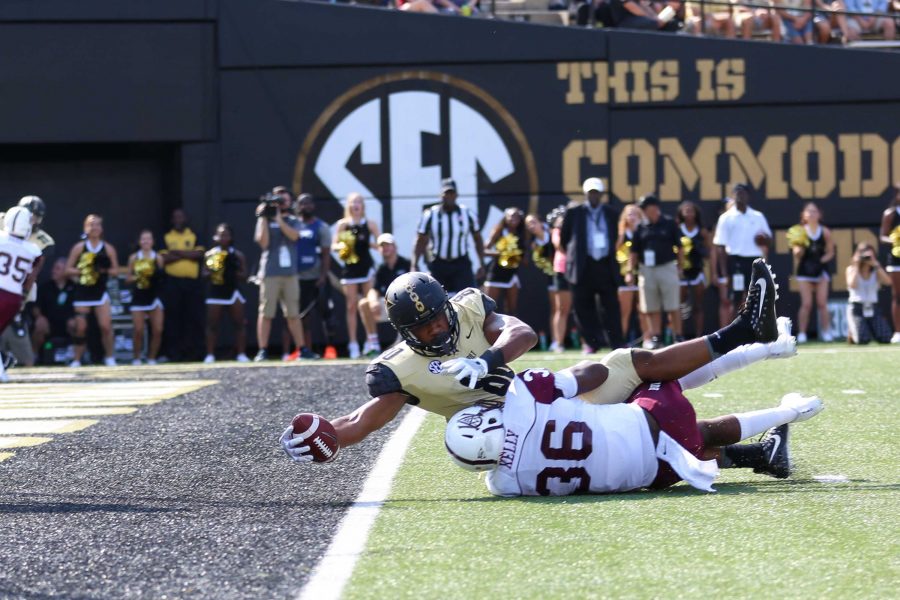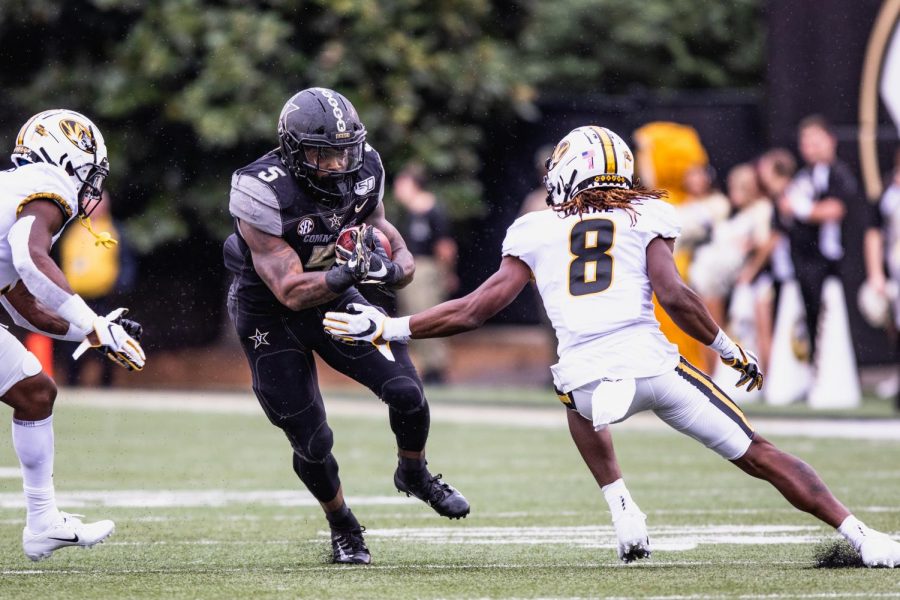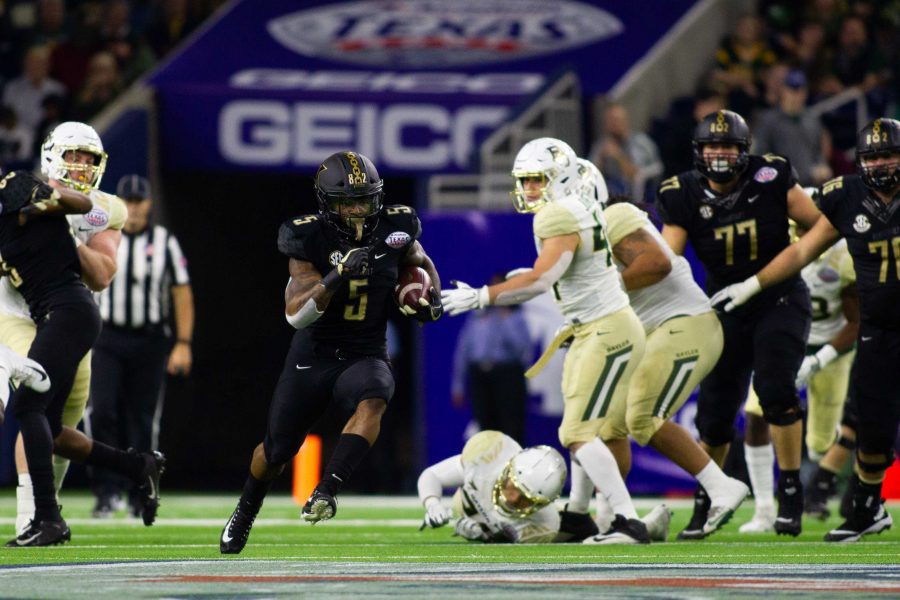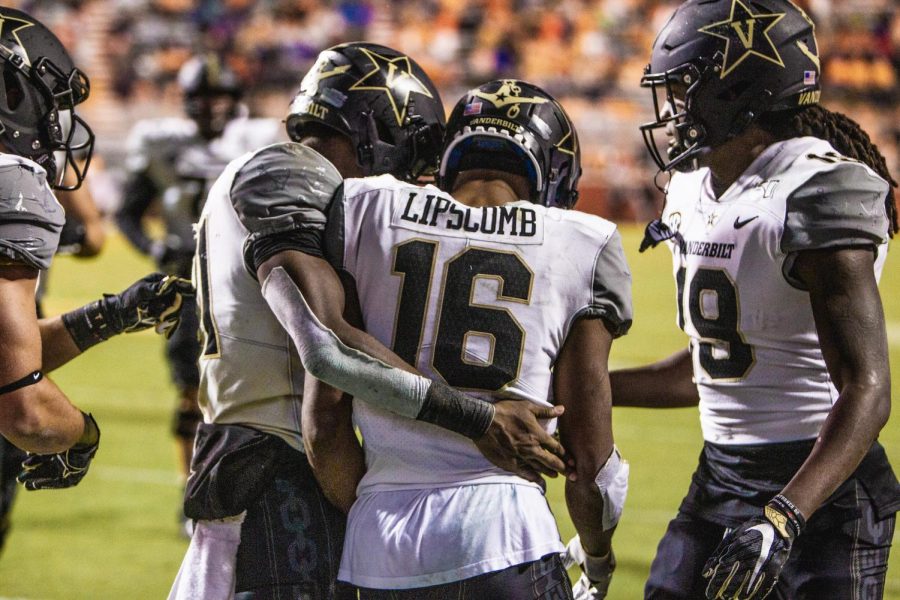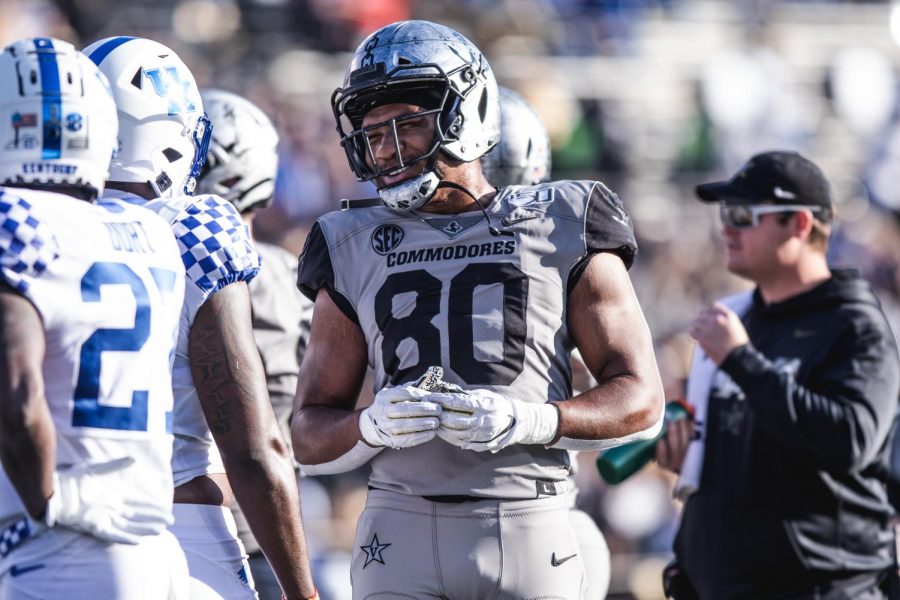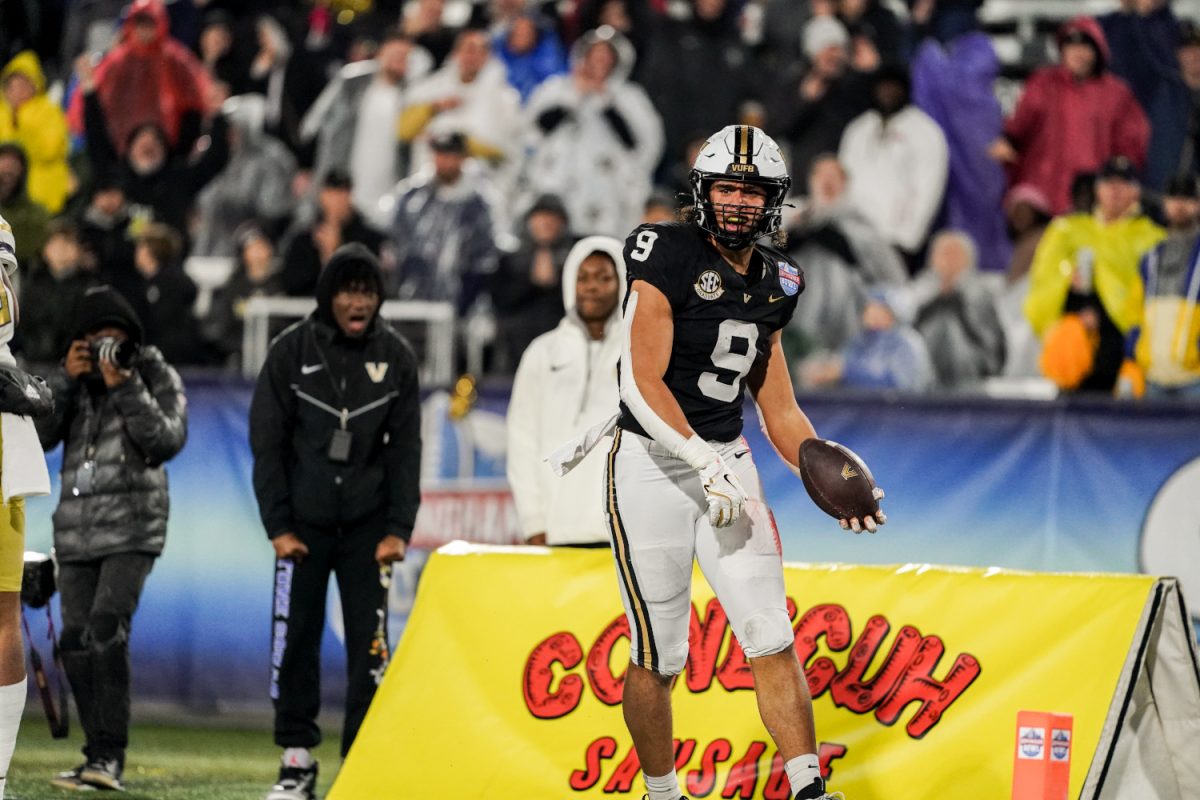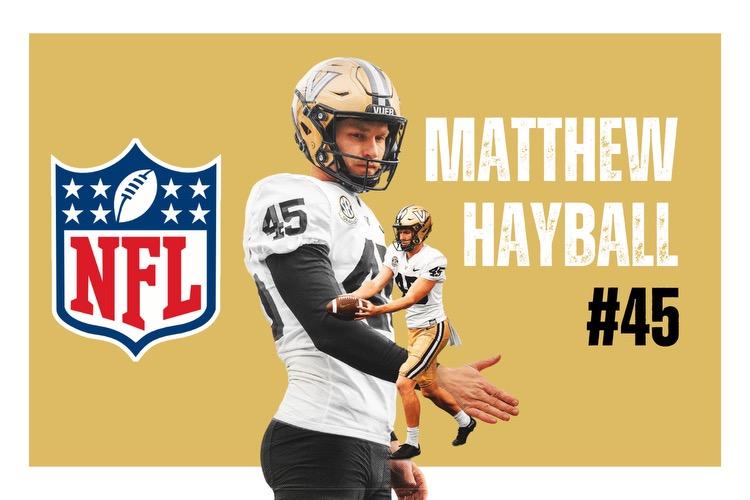Back in August, Vanderbilt tight end Jared Pinkney was garnering legitimate, nationwide attention—the type of spotlight that is seldom cast on Commodore prospects. The senior received an excess of preseason accolades, as he was named to the John Mackey Award watch list, Fred Biletnikoff Award watch list, second team All-SEC and first team All-American by Sporting News. In a preseason mock draft, ESPN Draft expert Todd McShay went so far as to rank Pinkney the 22nd-best prospect, placing him firmly in the first round.
Four weeks later, Pinkney had a meager ten receptions for 120 yards. But McShay, like other draft experts, stood by his ranking. He merely shifted Pinkney to his “first-round sleepers” list, a move he characterized as “cheating” because Pinkney is “suiting up for the 1-3 Commodores.”
Now, fast forward to April. Pinkney has completely vanished from McShay’s radar. CBS Sports labels Pinkney as a sixth-round pick. The Athletic projects Pinkney as a seventh-round pick.
What happened?
Simply put, Pinkney fell victim to the same odious Commodore offense as fellow prospects Ke’Shawn Vaughn and Kalija Lipscomb. His immense production dropoff, coupled with an extremely poor combine performance, unveiled a perfect storm—one that saw his stock plummet from first-round projections to a Day Three shoo-in.
Let’s take a look at what Pinkney brings to the table—could this be the same player with whom scouts once fell in love?
By the numbers

Statistically speaking, Pinkney’s senior season was a nightmare. The Norcross, Georgia, native managed to underperform in just about every conceivable category; his 20 receptions and 233 yards are both career lows, and his two receiving touchdowns tied for his lowest. He managed to log a single catch in just eight of the 11 games he played (the three catchless games explain why Sports Reference claims he only played in eight). Further, Pinkney had just five multi-catch games, and three of those games he had just two receptions. In 2016, as a redshirt freshman that only started six of 13 games, Pinkney still had seven multi-catch games. Ultimately, Vanderbilt’s star tight end—the same one who was once a preseason All-American—had fewer receptions and receiving yards than the running back Ke’Shawn Vaughn (28 receptions for 270 yards).
Pinkney suffered from the same poor quarterbacking as wide receiver Kalija Lipscomb, which certainly didn’t help his case. But unlike Lipscomb, who, according to Pro Football Reference, was at least targeted 80 times in 2019, Pinkney’s 43 targets reveal contentious play calling that made success an uphill battle. All season, he seemed to be an afterthought in the Commodores’ gameplan: writers went from arguing that Vanderbilt must use their star tight end more in Week Five, to merely reminding readers that Pinkney is, in fact, still on the team following his third catchless performance in Week Eleven.
In 2018, Pinkney was a frequent target on passes of 20-yards or more. This past season, Pro Football Reference noted just four targets of 20-plus yards—none of those four were completed. In fact, on those four throws, Pinkney’s signal-caller had a passer rating of 39.6. Given the obstacles Pinkney faced in 2019, an NFL front office is likely focused on his ceiling—a junior year with 50 receptions (11th in the SEC), 774 receiving yards (11th in the SEC) and seven touchdowns (7th in the SEC)—rather than his floor, which was certainly evident in 2019.
Measurables
Height: 6’4”
Weight: 257 lbs.
40-Yard Dash: 4.96 seconds
Bench Press: 23 reps
With so many coinciding barriers in 2019, one might expect scouts to evaluate Pinkney solely on his junior year. But if that were the case, his projections would likely be higher than the bottom-dwelling, Day Three prospect he’s made out to be.
Front offices seem to have planted a significant red flag next to Pinkney’s name because of his dismal NFL Combine performance, particularly his 4.96 second 40-yard dash time, which is slower than quarterbacks like Eli Manning (4.92 seconds), offensive linemen like Tyron Smith (4.93 seconds) and many more. In the 2020 NFL Combine, the only players to run a slower 40-yard dash were offensive linemen, defensive lineman, two quarterbacks, one punter and a long snapper. As a tight end who specializes in pass-catching, that 4.96 is going to hurt his stock. To make matters worse, COVID-19 cancellations meant Pinkney didn’t even have a Pro Day to redeem himself.
Pinkney’s 257-pound weigh-in puts him above the average for tight ends in his draft class (250.4), and his 23 bench reps—second most among 2020 tight end prospects—seems proportional to his size. The 40-yard dash time seems like a dagger, but perhaps scouts are looking in the wrong place.
Analysis
Pinkney’s junior year showcased plenty of upside as a receiving tight end. He managed to haul in 50 catches for an average of 15.4 yards per reception, which placed him well in the future first-round conversation. But now, even if scouts look past his senior season, a particularly slow 40-time has damaged his stock. The same analysts who were once fans of Pinkney have labeled him as someone with “no speed or explosiveness as a receiver.”
In reality, the speed was never what set Pinkney apart. Given his poor senior season, scouts and analysts want to believe Pinkney has very little value. His 40-time just so happens to be the perfect figurehead for an otherwise incomplete scouting report.
The traits that he exhibited in 2018 haven’t just disappeared. He’s still a high school wide receiver-turned-college tight end; the excellent hands at the catch point, body control and keen route running ability haven’t gone anywhere. He’s still a massive tight end who uses his strength to his advantage. He’s still able to find the end zone by being physical.
These traits are completely independent of his speed. Frankly, after his breakout junior year, no analysts were raving about Pinkney’s speed. Make no mistake: Pinkney is no Vernon Davis. He’s not going to appeal to the masses with a blazing 4.38 40-yard dash. He’s not a wide receiver disguised as a tight end. He’s a true tight end that can set up in-line and hold his own blocking for the run. He can even line up in the slot and use these immense attributes to counteract his lack of burst speed.
Ultimately, this is the same tight end we saw in 2018. The areas in which he specializes—balance, hands, physicality and more—are just not tested at the combine. The only red flag is from his speed-test, something in which he’s never been known to excel. Analysts are looking for anything to wrongfully explain his 2019 season, and it seems like his 40-time has fit the bill.
Projection
Two-time Pro Bowl tight end Austin Hooper decided to test free agency in the offseason and ended up scoring a four-year contract with $23 million guaranteed. Now that Atlanta’s star tight end has shipped off to Cleveland, the Falcons’ roster has a gaping hole at the tight end position. They traded the Ravens for former first-round pick Hayden Hurst, but the combination of Hurst, Khari Lee and practice squad players still seems underwhelming, at best.
Expect the Falcons to select a tight end at some point in the 2020 NFL Draft. This year’s tight end class is thin; rather than using an early pick to acquire one of the higher-ranked tight ends, they’ll likely wait until the mid-rounds. With two fourth round picks, Pinkney seems to suit their needs.


